Quality time: introducing the star turns of this year’s SIHH watch fair
Luxury industry insiders were out in full force at last week's Salon International de la Haute Horlogerie (SIHH), the first major watch fair of the year, helmed by the Richemont luxury conglomerate. If the mood seemed a little subdued, the general outlook appeared happily at odds with it. According to the 2015 World Watch Report - Haute Horlogerie Edition, consumer interest in fine watches is up by 23% on last year. Not bad at a time when the imminent arrival of the Apple watch slinks around the Swiss watchmaking landscape like a stranger it can't quite trust. Seemingly unperturbed, fine watch marques are still crafting fine -and mostly mechanical - watches. Here's a taste of what we saw...

Piaget Black Tie
Andy Warhol, a known horophile, was a die-hard Piaget fan and a good friend of the design visionary Yves Piaget during his years at the helm of the family business. It's not surprising to learn that Warhol owned the original version of this handsome cushion-shaped watch, its form neither round, square nor rectangular but all three in one. The white gold is worked in matte and shiny surfaces to create depth, while the dial is polished black onyx. The appeal lasts longer than 15 minutes.
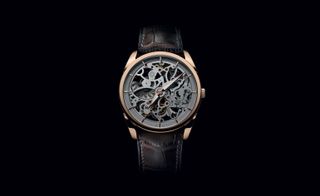
Parmigiani Tonda 1950 Squelette
This year, we are offered a peek inside the Tonda 1950's usually simple dial with a 'skeleton' view of its inner workings. But perhaps more interesting is the fact that the Tonda dial is made from sapphire, making it invisible, because the gold rim obscures the points where the movement and case meet. Another noteworthy detail is that while the dial on the men's watch is polished and clear, the ladies' model is subtly frosted. The reasoning is somewhat unclear but the effect is just as intriguing.
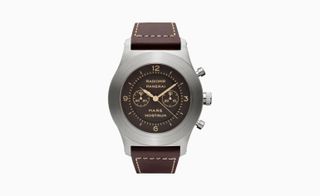
Panerai Mare Nostrum Titanio - 52mm
Anyone who tells you size isn't everything in a watch doesn't know Panerai. Or, to put it another way - when it comes to the Florentine brand's proportions, it's all about the bass. This year, the Florentine brand proves why, despite market trends, it will always do what it has always done best: scale. Big, huge or massive dials are integral to the Panerai aesthetic. Originally created for the deck officers of the Royal Italian Navy in 1943, this is a faithful reworking, limited to just 150 pieces for its 2015 incarnation.
Wallpaper* Newsletter
Receive our daily digest of inspiration, escapism and design stories from around the world direct to your inbox

Clé de Cartier
That Cartier has, somewhat stealthily, launched an entire new watch line aimed at both men and women, is big news. The fact it has altered the shape of its jewel-like cabouchon sapphire crown could be seen as a risky move, so central is it to the Cartier watch identity. Not only does the Clé de Cartier have an elongated sapphire crown that sits flush with the metal setting, it has a highly pleasing mechanical function. 'Clé' in French means key, and the house's engineers have replicated the tactile feeling of turning a key to wind up a clock, or an old music box to the mechanism, to rather addictive effect.
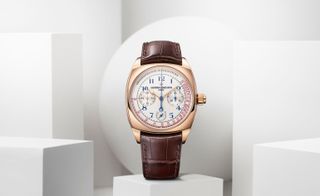
Vacheron Constantin Harmony
So perfectly named - the 'rounded square' cushion case shape is designed to give an almost 3D effect, while perfectly in tune with the old-school complicated dial. Taking inspiration from the architectural
lines of the first wrist chronographs made by the manufacture in the 1920s, the result is modern classic suited to men and women.
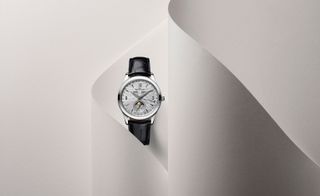
Jaeger-LeCoultre Master Calendar
If you like a watch with a talking point, the meteorite dial in this update of J-LC's Master Calendar line will kickstart the conversation. Crafted from a single block of meteorite found in the asteroid belt between Jupiter and Mars, it has been carefully cut into several thin plates to reveal its own particular pattern. And, just to remind you of its celestial influence, you can see the day of the week, the month and key moon phases at a glance.

Ralph Lauren Sporting Automotive
When he established his haute horlogerie brand under the auspices of the Richemont group just over five years ago, Ralph Lauren's passion for Cartier classics was obvious. This year sets out the future for Ralph Lauren classics.
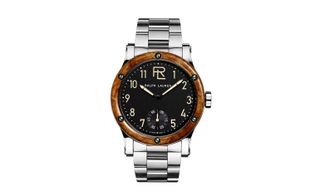
Ralph Lauren Sporting Automotive
Taking inspiration from his beloved Bugatti, the American style maestro's new pieces are a pleasing mix of expert watchmaking and Ralph's particularly American brand of rustic chic: rare hardwoods, steel and skeleton movements, to be precise.
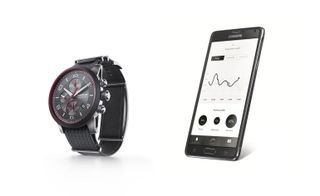
Montblanc Timewalker Urban Speed e-strap
That the German luxury marque has had the front to respond so directly to the coming of the Smartwatch is praiseworthy. The fact that it has done so in such a subtle way - the technology is focused in the interchangeable strap rather than the dial - is a smart riposte that does not seek to copy but create. In effect The Timewalker Urban Speed e-strap works like a remote control for your phone, via Bluetooth, so that you don't have to keep pulling it our of your bag or pocket. Hence, you can preview your email inbox, operate your camera, read texts, measure your activity and calories consumed - all from a smart mechanical watch.
Caragh McKay has been a contributing editor at Wallpaper* since 2014. She was previously watches & jewellery director and is currently our resident lifestyle & shopping editor. Caragh has produced exhibitions and created and edited titles for publishers including the Daily Telegraph. She regularly chairs talks for luxury houses, Van Cleef & Arpels and Cartier among them. Caragh’s current remit is cross-cultural and her recent stories include the curious tale of how Muhammad Ali met his poetic match in Robert Burns and how a Martin Scorsese film revived a forgotten Osage art.
-
 Ikea introduces its first gaming furniture collection
Ikea introduces its first gaming furniture collectionBrännboll is the first Ikea gaming furniture collection, unveiled during Milan Design Week 2024 and designed to swiftly transform a domestic space into a gamer’s paradise
By Jasper Spires Published
-
 Morgan take their classic roadster and give it subtle but significant tweaks for 2024
Morgan take their classic roadster and give it subtle but significant tweaks for 2024New details and features give the compulsive Morgan Plus Four an even more pared back silhouette and driving ability
By Jonathan Bell Published
-
 Wallpaper* Class of '24 exhibition now open at Triennale Milano
Wallpaper* Class of '24 exhibition now open at Triennale MilanoWallpaper* Class of '24 exhibition at Triennale spotlights international emerging talent in furniture and product design, with the support of AHEC and SNOW (until 21 April 2024)
By Rosa Bertoli Published
-
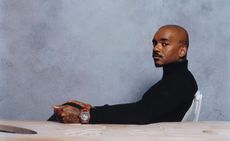 Samuel Ross unveils his Hublot Big Bang watch design
Samuel Ross unveils his Hublot Big Bang watch designSamuel Ross brings a polished titanium case and orange rubber strap to the Hublot Big Bang watch
By Pei-Ru Keh Published
-
 Playful design meets chic heritage in the Hermès Kelly watch
Playful design meets chic heritage in the Hermès Kelly watchThe new Kelly watch from Hermès rethinks the original 1975 timepiece
By Hannah Silver Last updated
-
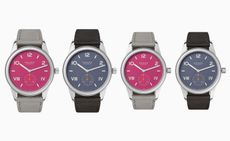 Discover the tonal new hues of the classic Nomos Club Campus watch
Discover the tonal new hues of the classic Nomos Club Campus watchThe Nomos classic wristwatch Club Campus now comes in two new collegiate colours. The perfect graduation gift from the Glashütte manufacture
By Hannah Silver Last updated
-
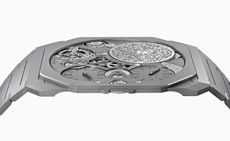 Bulgari unveils the thinnest mechanical watch in the world
Bulgari unveils the thinnest mechanical watch in the worldThe new Bulgari Octo Finissimo Ultra watch is a record-breaking feat of engineering
By Hannah Silver Last updated
-
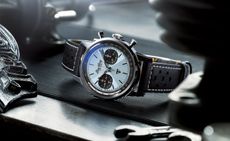 Breitling and Triumph unite on a racy new watch and motorcycle
Breitling and Triumph unite on a racy new watch and motorcycle1960s design codes are infused with a contemporary edge in the collaboration between Breitling and Triumph
By Hannah Silver Last updated
-
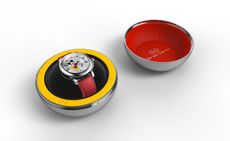 Gerald Genta’s mischievous Mickey Mouse watch design is rethought for a new era
Gerald Genta’s mischievous Mickey Mouse watch design is rethought for a new eraThe Gerald Genta Retrograde with Smiling Disney Mickey Mouse watch pays tribute to Genta’s humorous design codes
By Hannah Silver Last updated
-
 Shinola honours Georgia O’Keeffe with a new watch
Shinola honours Georgia O’Keeffe with a new watchShinola Birdy watch stays faithful to the minimalist codes of Georgia O’Keeffe’s painting, My Last Door
By Hannah Silver Last updated
-
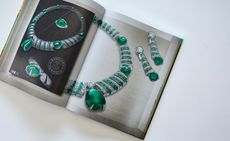 Bulgari’s new book celebrates women and high jewellery
Bulgari’s new book celebrates women and high jewelleryBulgari Magnifica: The Power Women Hold, published by Rizzoli New York, takes a closer look at the female muses who inspired the spectacular Magnifica high jewellery collection
By Hannah Silver Last updated